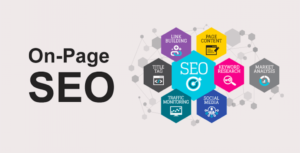Optimize your free Google Business Profile Optimize your free Google Business

Google Get Your Business Online is a program launched by Google in 2011 aimed at increasing the web presence of small businesses and cities by providing free advice on search engine optimization and helping business owners update their information on Google for free. The program started rolling out across the US in 2012. Partners in the program include the Association of Small Business Development Centers, SCORE and Intuit. A recent initiative of the program, entitled “Let’s Put Our Cities on the Map” was launched in March 2015. According to USA Today, “Google has generated customized websites for virtually every town and city in the U.S. to enable local businesses to learn to improve the information that shows up on Google search, Google maps and Google+.”It has been described as a community–based organization aimed at helping small businesses succeed on the Web by bringing community members, business owners, and local business leaders together. USA Today described the program as an “aggressive new program to help small businesses get found online.” The program includes access to additional online resources including mentoring and workshops. Local chambers of commerce have worked with Google in a partnering basis. In some instances, Google works with a website development service called Yola which helps businesses build and customize a website.
Building Backlinks

A backlink is a link from some other website (the referrer) to that web resource (the referent). A web resource may be (for example) a website, web page, or web directory.
A backlink is a reference comparable to a citation. The quantity, quality, and relevance of backlinks for a web page are among the factors that search engines like Google evaluate in order to estimate how important the page is. PageRank calculates the score for each web page based on how all the web pages are connected among themselves, and is one of the variables that Google Search uses to determine how high a web page should go in search results. This weighting of backlinks is analogous to citation analysis of books, scholarly papers, and academic journals. A Topical PageRank has been researched and implemented as well, which gives more weight to backlinks coming from the page of a same topic as a target page.
Some other words for backlink are incoming link, inbound link, inlink, inward link, and citation.
Do On Page SEO

Search engine optimization (SEO) is the process of improving the quality and quantity of website traffic to a website or a web page from search engines.SEO targets unpaid traffic (known as “natural” or “organic” results) rather than direct traffic or paid traffic. Unpaid traffic may originate from different kinds of searches, including image search, video search, academic search, news search, and industry-specific vertical search engines.
As an Internet marketing strategy, SEO considers how search engines work, the computer-programmed algorithms that dictate search engine behavior, what people search for, the actual search terms or keywords typed into search engines, and which search engines are preferred by their targeted audience. SEO is performed because a website will receive more visitors from a search engine when websites rank higher on the search engine results page (SERP). These visitors can then potentially be converted into customers.
To know more about SEO and On page SEO visit – ‘AnswerPuchho.com’
Get listed in online directories

An online directory is a submission-based online service.
You secure your entry by “claiming” your listing. Typically they are free, or free to start with a paid option unlocking more features for your listing. Typical information listed include a company’s name, address, phone number, hours of operation, website, social media accounts, a short description of what the company does, photos and a listing of products and services sold.
Online directories are also referred to as “citations” or citation sites.
Whether you sell to businesses (B2B) rather than walk-in customers is irrelevant. Online directories help give Google another online signal that you exist.
Whether your sales cycle is long or your prices high or your buyer is of the executive type, it doesn’t matter. Your potential customer will most likely start their journey for the product/service/questions they need answers to by doing an online search. They’ll probably use Google.
I’m betting you’d like your products/services/excellent-blog-that-answers-the-questions-they-have to come up in that online search a potential customer just did, correct? In order for that to happen, you need to give Google/Bing/Yahoo all the help they need to put you into the search results.
Stop thinking about local business as just the local pizza shop or hair salon. If you do executive training for large companies and only serve the C-suite, yet deliver your services in your city, you are a local business and you can benefit from listing your company in online directories.
This article from Duct Tape Marketing and this one on local citations from Moz.com both explain further why local directories are important for your business.
Use of HashTags on social media

Hashtags increase engagement and reach. They help users discover content they care about and guide brands to target audiences interested in their niche. This increases brand visibility and sparks conversations around relevant topics.They act as tags that categorize content, allowing users to find exactly what they’re looking for. By including a mix of popular and niche hashtags, brands can connect with potential customers actively searching for related products or services.Hashtags provide additional context. They provide context beyond captions, making your message clearer and more engaging. This can be especially helpful for visual content like photos and videos on platforms like Instagram and Pinterest.Given the sophistication of today’s social media algorithms, it might be difficult to remember the chaotic social feeds of the early 2000s. Users had limited control over what content they saw and were frustrated by too many uninteresting or irrelevant posts.
Hashtags were invented to help bring order to the social media user experience. Hashtags group together similar conversations to help people find content that matters to them. Once a hashtag is published, it becomes a clickable, searchable link.
